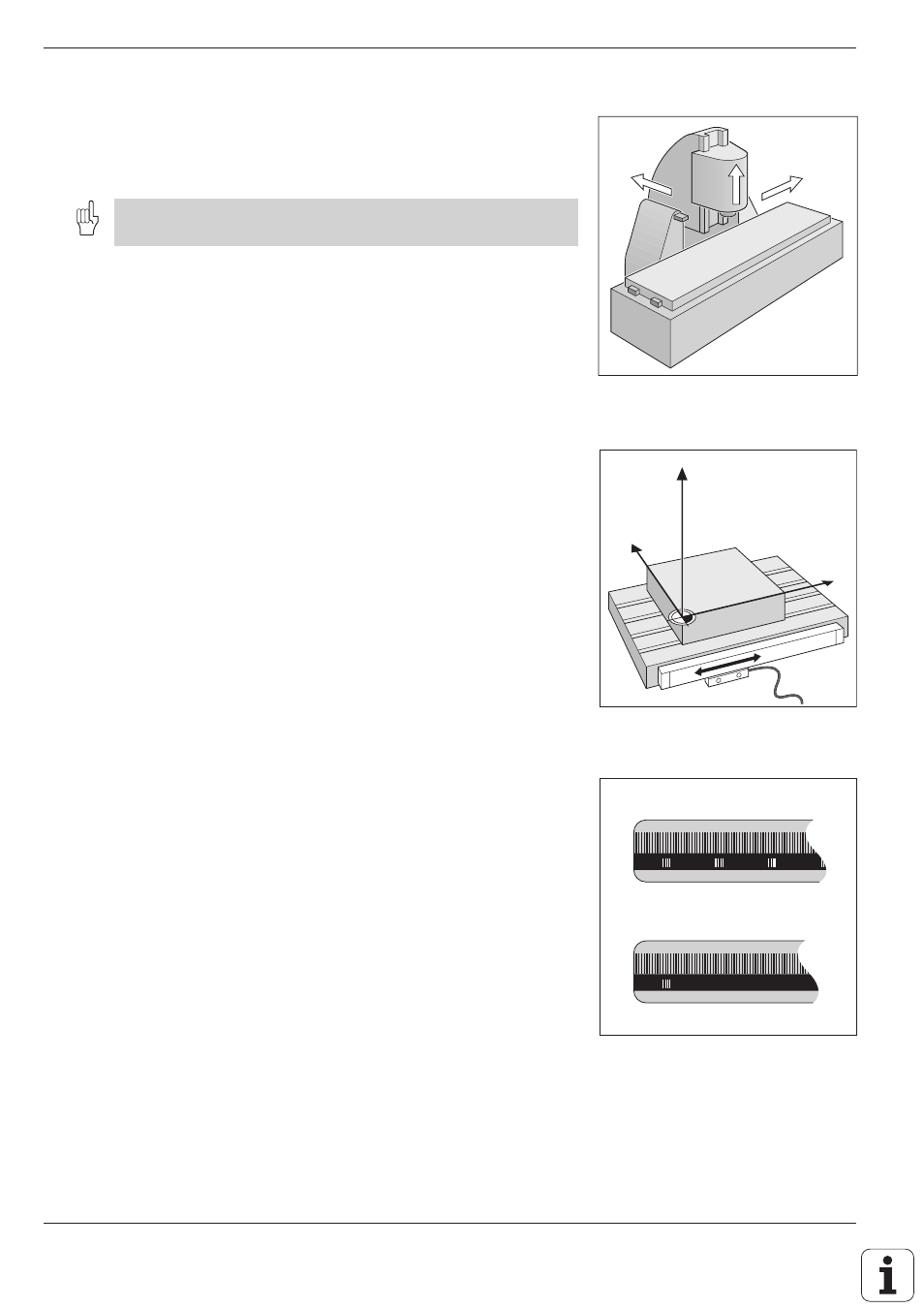X +z +y – HEIDENHAIN TNC 407 (280 580) ISO Programming User Manual
Page 36

TNC 426/TNC 425/TNC 415 B/TNC 407
1-18
1
Introduction
Fig. 1.18:
On this machine the tool moves in
the Y and Z axes, and the table
moves in the +X' axis.
Fig. 1.20: Linear scales: with distance-coded
reference marks
(upper illustration)
and one reference mark
(lower
illustration)
Fig. 1.19:
Linear position encoder, here for
the X axis
Y
X
Z
+X
+Z
+Y
Programming tool movements
During workpiece machining, an axis position is changed either by move-
ment of the tool or movement of the machine table on which the work-
piece is fixed.
You always program as if the tool moves and the workpiece remains
stationary.
If the machine table moves, the corresponding axes are identified on the
machine operating panel with a prime mark (e.g., X’, Y’). The programmed
direction of such axis movement always corresponds to the direction of
tool movement relative to the workpiece but in the opposite direction.
Position encoders
Position encoders convert the movement of the machine axes into
electrical signals. The control constantly evaluates these signals to
calculate the actual position of the machine axes.
If there is an interruption in power, the calculated position will no longer
correspond to the actual position. When power is restored, the TNC can
re-establish this relationship.
Reference marks
The scales of the position encoders contain one or more reference marks.
When a reference mark is crossed over, it generates a signal which
identifies that position as the machine axis reference point. With the aid of
this reference mark the TNC can re-establish the assignment of displayed
positions to machine axis positions.
If the position encoders feature distance-coded reference marks, each
axis need only move a maximum of 20 mm (0.8 in.) for linear encoders,
and 20° for angle encoders.
